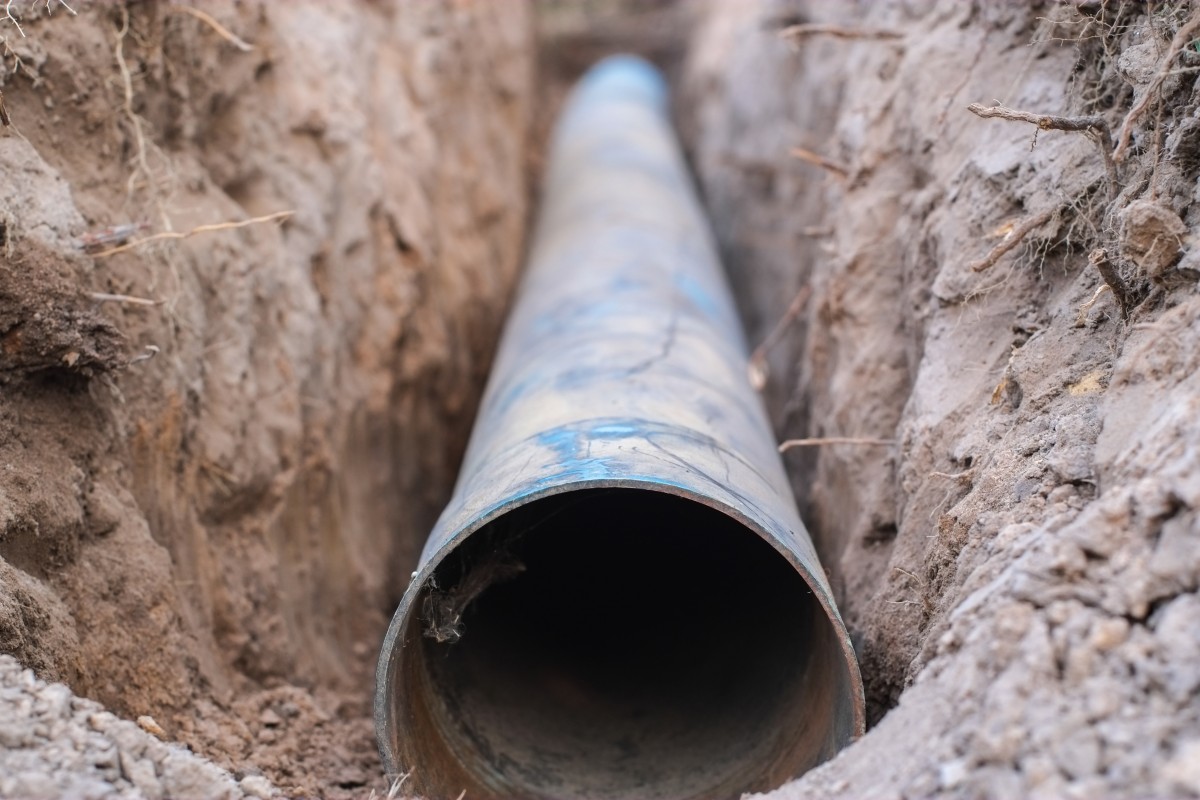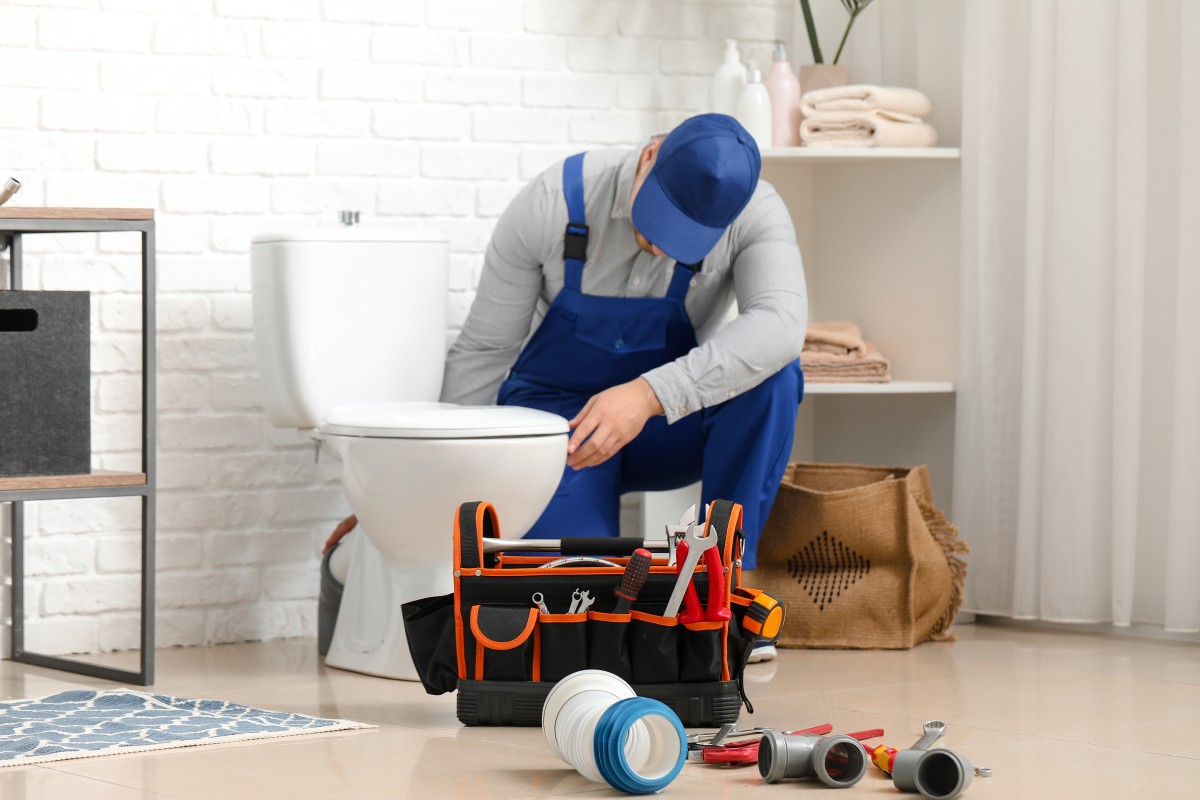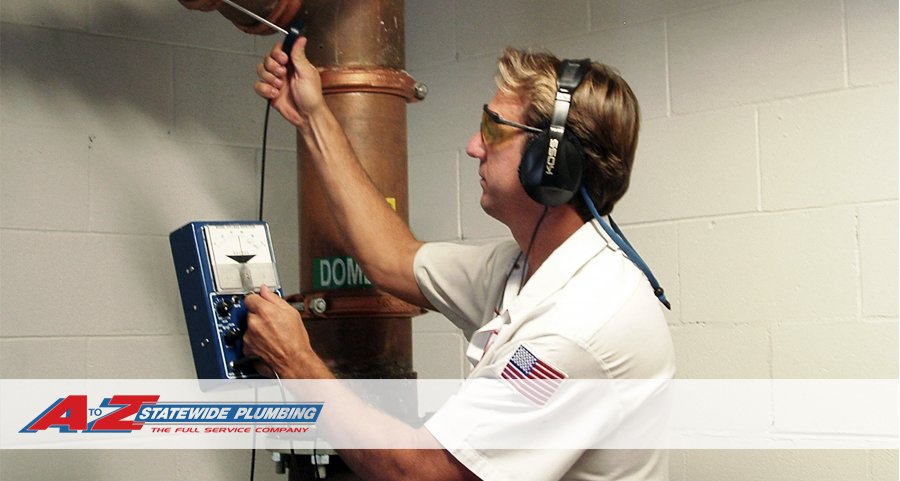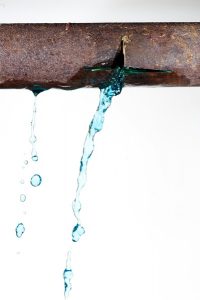Did you know that Canada’s plumbing sector is a $14 billion industry? That’s how in-demand plumbers are, seeing as each one of us rely on plumbing systems, every single day.
There’s no doubt that plumbers are critical workers, seeing as plumbing is vital to daily life. Indeed, the Canadian Government has deemed plumbers as essential workers.
With that said, you may be wondering if that sulfur smell in your home warrants a call to Toronto plumber. You may be hoping for the rotten egg smell to dissipate in a few hours before you ring up a plumbing pro.
Depending on where the smell is coming from, it may warrant immediate attention.
This post will share some of the most important facts about sulfur-smelling gases at home, so be sure to read on.
What’s That Sulfur Smell Anyway?
Hydrogen sulfide (H2S) is a gas that smells like sulfur, which in turn, carries the odor of rotten eggs. It’s the same gas that permeates the water in hot springs.
At home, however, a sulfur smelling gas can either come from sewer gases or natural gas. Sewer gases consist not only of H2S but also ammonia and others like methane and carbon dioxide.
Natural gas, on its own, is odorless. However, gas suppliers add a chemical called “mercaptan” to it to make leaks easier to detect. Like H2S, mercaptan smells like sulfur or rotten eggs too.
A sulfur smelling gas that comes from your home’s drains, however, is more likely due to sewer gases. These are the gases produced by waste products as they naturally breakdown and decay.
Is Sulfur Smelling Gas In Your Home Dangerous?
If the smell is from a natural gas leak, it is dangerous, as it can cause explosions. One way to tell that the sulfur-like smell is from a gas leak is if you also hear a hissing sound from the gas tank itself. In case you ever experience this, be sure to call the authorities or your utility provider ASAP.
If sewer gas is to blame, you don’t have to panic, since, at very low levels, it isn’t dangerous. However, the gases can still pose hazards if they get trapped in an ill-ventilated space. Over time, these entrapped gases can accumulate and reach toxic levels.
Note, though, that the Canadian Government classifies pure hydrogen sulfide as very toxic. In elevated levels, it can cause adverse effects like breathing difficulties. It can also harm and irritate the skin and the eyes.
How to Tell If the Foul Smells Are Coming Out of Your Drains
Sometimes, plumbing-related sulfur odors can be due to the water itself. The City of Toronto monitors over 150 possible compounds in its drinking water. This includes sulfate, which can react with other elements in the water to form H2S.
To determine if it’s the water or the drain that smells like sulfur, take a glass of water from one of your faucets. Go outside and take a whiff of the water. If it smells like rotten eggs, repeat the steps using a different tap.
If the second glass of water still smells like sulfur, then the culprit is most likely your water.
If both glasses smell fine, run the same faucets you took water from and let the water drain. Stand near the sink as the water flows into the drain. If the sulfur smell from the sink becomes stronger, what you’re inhaling is likely sewer gas.
Causes of Sulfur Smell Related to Your Toronto Home’s Plumbing System
Clogs in drains are among the most common causes of sulfur smells in houses. Loose toilets, cracked or damaged pipes, as well as blocked vents, can also leak sewer gases into your home. In some cases, plumbing systems that dry out are also to blame.
Clogged Drains
The drains in your Toronto home are responsible for channeling waste out of your home. However, incorrect waste disposal practices can result in clogs forming inside drain pipes. If this happens, organic materials can start to decay from within the drain pipes.
Such materials include food debris, hair, and pet waste among many others. As for food, FOG, which stands for fats, oil, and grease, is among the biggest culprits. FOG buildups contribute to Canada’s yearly spending of $250 million to clean up sewers.
In any case, unremoved clogs in drains can continue to breakdown and release sewer gases. The gases can then flow out of the holes of your drain covers.
If you’ve also noticed signs of blocked drains aside from the sulfur smell, take that as a sign to call a plumber. This way, the Toronto plumbing specialist can clear those drains right away. Not only will this get rid of the rotten egg smell; it’ll also restore the health of your drains.
Problems With Toilet Seals
Toilet problems, such as a broken or a loose seal, can also cause a sulfur smell in the bathroom. The gaps that these damaged or detached seals create can allow sewer gases to escape and enter the room.
Aside from the sewer smell, you may also notice that the toilet bowl doesn’t fill up the way it used to.
Blockages in the Vents of Your Drain-Waste-Vent System
The plumbing system in your Toronto home consists of not just drain and waste pipes, but also vent pipes. Together, all these pipes make up the drain-waste-vent (DWV) system.
Drain pipes collect wastewater from kitchen and bathroom sinks, shower, and tub drains. These are also the pipes that collect used water from the dishwasher and washing machine.
Waste pipes, in turn, remove water and waste material from the toilet.
The vent pipes, on the other hand, don’t carry water; instead, they deal with air and gases. These are the pipes that allow air to get into the system to help facilitate the flow of wastewater. They are also the ones that remove sewer gases from your home.
As such, if the vent pipes get clogged with dirt or debris, they will be unable to exhaust sewer gases. With nowhere else to go, the sewer gases can leak into your home.
Dry P-Traps
P-traps are pipes that resemble the letter P (or sometimes, U). They connect to the drains of each of your plumbing fixtures. Each toilet and appliance (like your dishwasher and clothes washer) also has its own P-trap.
P-traps that work fine hold enough standing water, which then acts as a seal. This sealing effect, in turn, keeps sewer gases from being able to creep up the drains. Whenever you use a fixture, that water gets “replenished,” ensuring a constant seal.
If you have sinks, toilets, or drains that you don’t use often, then the water in their P-trap may have dried out. Since the pipe no longer has a “seal,” then it may be the culprit behind the sulfur smell in your house. Most often, you can fix this by simply running the water to refill the dried out P-trap.
If that doesn’t do the trick, try running water through all of your other drains. If this still doesn’t get rid of the sulfur smell, then you may be dealing with leaky or damaged P-traps. It’s best to call a Toronto plumber to have a look at your home’s plumbing pipes.
Cracked Pipes
Sewer gases can leak out of any cracked or damaged pipe within your Toronto home’s DWV system. Sometimes, the damages are easy enough to fix with a seal or replacement pipe. This is true for easy-to-access pipes, such as those that you can find under the sink.
However, there are many cases wherein the damaged pipe is behind the wall or underground. It’s even possible that your sewer line itself may be the culprit behind the sulfur smell. In this case, you may already require sewer repair or replacement.
Plumbing Backups
Each year, Canada sees about 19.5 million cases of acute gastrointestinal diseases. Many of these are a result of exposure to pathogens that contaminate food and water. As you can imagine, many of these disease-causing microorganisms are in raw wastewater.
You can get exposed to untreated wastewater or sewage if you experience a drain backup. This is what clogged drains and sulfur-like smells ultimately lead to.
With that said, if water backs up from your sink or floor drains, please get in touch with a plumber right away. This way, your local plumbing expert can address not just the sewer smells, but the root cause of the backup too.
What to Do If Your Drains Emit Sewer Smells
Ultimately, you’d want to get in touch with drain cleaning experts at the first sign of sulfur smells. In doing so, you can avoid the clogs from causing more severe problems like backups. At the same time, having your drains cleaned by a pro can restore the efficiency of your DWV system.
In the meantime, here are some of the things you can do to get rid of or reduce the stinky odors.
Clean and Sanitize Your Garbage Disposal
Bits and pieces of food debris can get stuck on the pits or blades of your garbage disposal. It can take as little as two hours for bacteria to start breaking down these tiny pieces of food. Also, keep in mind that most bacteria grow quickly in temperatures between 40 °F and 140 °F.
From there, the rotting food can then start to emit sulfur-like odors and other bad smells.
As such, always make it a habit to clean and sanitize your sinks, sink drains, and garbage disposal. Dropping a few cubes of ice into the disposal system before running it can help get rid of any stuck debris. Lemon, which is antibacterial, may also help reduce smells and sanitize your drains.
Try a Homemade Drain Smell Remover
You can also clean all other drains using baking soda, vinegar, and hot water. For each drain, pour about half a cup of baking soda. Then, tip in a cup of vinegar into the drain, followed by hot water.
Baking soda and vinegar may help not only reduce the smells but also kill some of the bacteria too. Baking soda, according to scientists, does have antimicrobial properties. The acid in vinegar may also help get rid of some pathogens hiding in your drains.
Remove Any Obstruction on Drain Covers
Biofilm, which is a buildup of bacteria, can form on plumbing fixtures and drains. You may have seen this gooey, disgusting substance around the base of your taps. You may have also encountered it during those times that you inspected your drain covers.
Since biofilm is a collection of bacterial species, it can also produce bad smells. They often smell like mold or sewage, but they may also give off a rotten egg odor.
With that said, you’d want to get rid of biofilm before they stink up your sinks or bathroom. However, be sure to don gloves before you clear the covers of your drains. Your homemade solution of baking soda and vinegar may also help get rid of this substance.
Preventive Measures To Avoid Stinky Sulfur or Sewer Smells
One of the best ways to keep these foul smells at bay is to properly dispose of food waste. Never pour fats, oil, or grease down your sinks and drains. They may be liquid now, but it won’t take long for them to congeal.
Unfortunately, FOG can solidify while they’re still flowing through your drain pipes.
What you should do instead is to collect used FOG in a sealable container, such as a jar. Once it’s full, you can then scrape out the contents into your green bin.
Aside from keeping bad smells at bay, proper waste disposal also reduces risks of clogs. This also helps you prevent sewage backups from occurring and damaging your home.
It’s also a good idea to have your DWV system undergo routine check-ups and cleaning. This way, you can address potential clogs before they become bigger and cause more issues.
Say Goodbye to Foul Sulfur or Sewer Odors
There you have it, all the essential facts you need to know about the sulfur smell coming out of your drains. You may want to try the DIY solutions we’ve mentioned, but if none of them work, it’s time to go pro. Also, for your safety, please make sure that the rotten egg smell isn’t due to a natural gas leak.
If the DIY fixes don’t help, then please know that our team here at Anta Plumbing is happy to help. Feel free to get in touch with us so we can help you get rid of those foul drain smells.
The post Why is There a Sulfur Smell Coming from Your Drain? first appeared on Anta Plumbing Blog.
This post first appeared on https://blog.antaplumbing.com

 People often think of the garbage disposal in their kitchen sink as an appliance that will never need to be replaced. To them, it’s just a part of the structure of the kitchen, and until the day the kitchen gets a major renovation, the garbage disposal will hang around and keep doing its job.
People often think of the garbage disposal in their kitchen sink as an appliance that will never need to be replaced. To them, it’s just a part of the structure of the kitchen, and until the day the kitchen gets a major renovation, the garbage disposal will hang around and keep doing its job.


 Your plumbing is an important part of your home, but we think it’s safe to say that you probably don’t think about it too often. We’re not here to pass judgment when it comes to this. We know that we’re the professionals that have made plumbing our livelihood, but this is understandable from a homeowner’s perspective.
Your plumbing is an important part of your home, but we think it’s safe to say that you probably don’t think about it too often. We’re not here to pass judgment when it comes to this. We know that we’re the professionals that have made plumbing our livelihood, but this is understandable from a homeowner’s perspective. 10 Tips? Did you hear that right? How can there be that many air conditioning tips to increase efficiency, longevity, and the overall health of your system? Well, take it from your local HVAC contractor that there are probably even more tips out there! Best practices and DIY tips exist in many forms, whether it’s home improvement, keeping your car in good shape, or even helping your comfort systems keep you happy.
10 Tips? Did you hear that right? How can there be that many air conditioning tips to increase efficiency, longevity, and the overall health of your system? Well, take it from your local HVAC contractor that there are probably even more tips out there! Best practices and DIY tips exist in many forms, whether it’s home improvement, keeping your car in good shape, or even helping your comfort systems keep you happy.